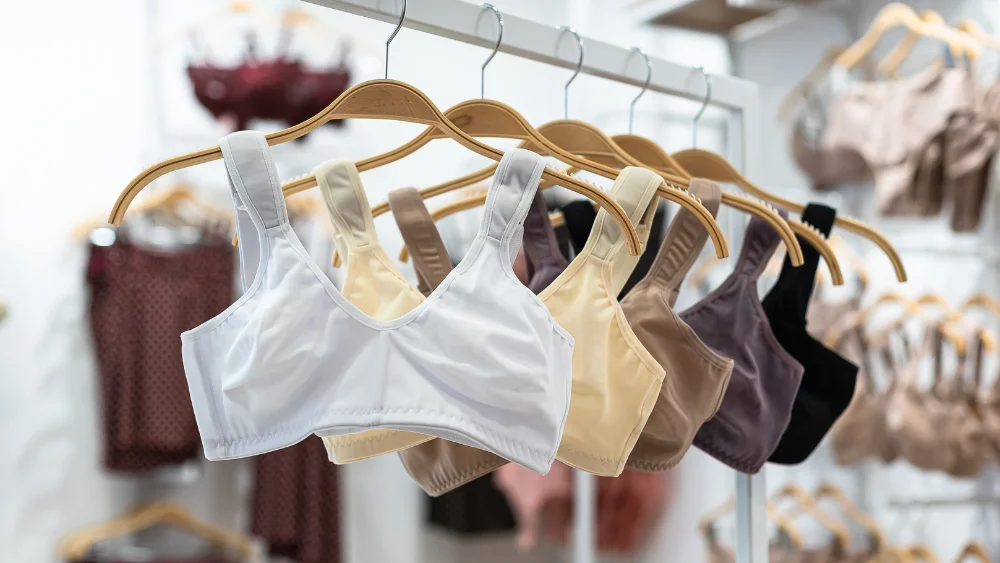Understanding the bra cost is crucial when choosing lingerie, as it involves not just material but also labor, design, and manufacturing costs. Investing in high-quality bras brings long-term comfort, durability, and health benefits, helping consumers make informed decisions while balancing comfort, price, and sustainability.
Table of Contents
Why Understanding the True Cost of Lingerie is Crucial
Lingerie, as a close-fitting garment, is not only a symbol of comfort and beauty, but its price variation also reflects the complex cost structure behind it. Why do bras range from just a few dollars to several hundred? Sometimes, we overlook the fact that the price does not merely reflect material differences but also includes design, manufacturing craftsmanship, labor costs, and more. Understanding the bra cost is vital as it helps consumers make informed purchasing decisions and gives insight into how brands use pricing to reflect their commitment to quality. Especially for high-quality bras, although the initial investment is higher, the long-term returns in terms of comfort, durability, and health benefits are well worth it. By understanding the underlying cost structure, consumers can better identify which products are worth investing in and avoid the risks of compromising on comfort and health in a blind pursuit of low prices.
Comparing Good and Bad Fabrics: The Key Factor in Determining Bra Quality
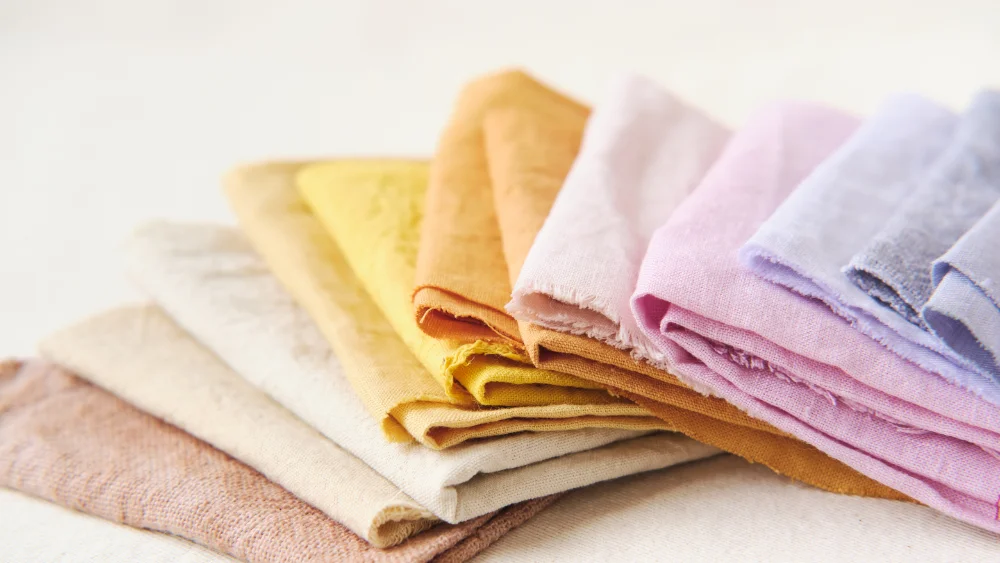
Low-Quality Fabrics: Poor Breathability, Discomfort, and Skin Irritation
The fabric of lingerie directly impacts the comfort and health of the wearer, with low-quality fabrics often leading to various issues. Many inexpensive bras use cheap synthetic fibers, which have poor breathability, leading to a stuffy feeling and even skin irritation. Synthetic fibers like polyester or nylon, although cheap, tend to make the skin uncomfortable in hot or humid conditions. Particularly in the summer or during exercise, bras made from low-quality fabrics fail to wick moisture effectively, allowing bacteria to thrive and causing unpleasant odors or skin issues. Furthermore, cheap lingerie often features low-quality lace or other ornamentation, which may feel rough to the touch and may cause skin allergies due to fiber stiffness or poorly-dyed materials. Long-term use of such bras can result in skin redness, irritation, and itching.
Additionally, low-quality fabrics are not durable. Many cheap bras lose their shape, fade, or the fabric begins to crack after just a few washes, affecting the overall wearing experience. For lingerie, comfort and health are far more important than appearance, but low-quality fabrics often fail to provide both.
High-Quality Fabrics: The Advantages of Natural Fibers (Cotton, Silk) and Synthetic Alternatives
In contrast to low-quality fabrics, high-quality fabrics directly determine a bra’s comfort, durability, and skin-friendliness. Natural fibers such as cotton and silk are known for their excellent breathability, moisture-wicking, and skin-friendly properties, making them ideal for comfort. For example, cotton’s natural breathability allows the skin to “breathe” freely, which is especially beneficial for long wear or those with sensitive skin. Cotton bras have excellent moisture absorption, effectively wicking away sweat, preventing moisture from lingering on the skin, and reducing bacterial growth.
Silk is another common high-end fabric. Not only is it luxurious to the touch, but its natural fiber structure gives it excellent moisture-wicking and breathability. Silk lingerie provides comfort while keeping the skin dry, making it ideal for the spring and fall seasons. Although silk tends to be more expensive, its durability and comfort are unparalleled compared to other fabrics.
On the other hand, some high-quality synthetic fibers, such as modal and Lycra, are also great options. These materials offer excellent elasticity and comfort, making bras more durable while maintaining a pleasant wearing experience. Despite being man-made, these fibers excel in comfort, breathability, and stretchability, becoming the go-to choice for many high-quality sports bras and everyday lingerie.
Environmental Impact: High-Quality Bras Made from Eco-Friendly Fabrics like Organic Cotton and Bamboo
As consumer awareness of environmental issues increases, more lingerie brands are focusing on eco-friendly fabrics. These high-quality materials are not only safe for the human body but also reduce environmental pollution during production. Organic cotton, for example, is grown without synthetic pesticides or artificial fertilizers, minimizing its impact on the soil and water. Compared to traditional cotton, organic cotton production is more sustainable, and although the bra cost is higher, the health benefits for consumers and the environmental contributions are clear.
Bamboo fiber is another widely-used eco-friendly fabric. Bamboo is naturally antibacterial and breathable, making bamboo fiber bras able to keep the wearer dry while inhibiting bacteria growth. Additionally, bamboo absorbs carbon dioxide and releases oxygen during its growth, making it a highly sustainable resource. Bras made from bamboo and other eco-friendly materials not only provide comfort but also help reduce the depletion of Earth’s resources.
Moreover, using eco-friendly materials not only reduces the burden on the environment but also decreases the potential harmful effects of chemicals on the skin. Today, many major brands are investing in sustainable production methods and eco-friendly fabrics to ensure that each bra cost reflects a commitment to health and environmental responsibility.
| Comparison Dimension | Low-Quality Fabric | High-Quality Fabric |
|---|---|---|
| Breathability | Poor breathability, can cause discomfort | Excellent breathability, keeps skin dry and comfortable |
| Comfort | Uncomfortable, may cause skin irritation | Soft, comfortable, and skin-friendly |
| Moisture-Wicking | Poor moisture-wicking, causes discomfort | Strong moisture-wicking, keeps skin dry |
| Durability | Poor durability, may shrink or fade | Strong durability, maintains good condition over time |
| Health | May contain harmful chemicals, causes allergies | Safe for sensitive skin, uses natural materials (e.g., organic cotton, bamboo) |
| Environmental Impact | Pollution during production, hard to degrade | Eco-friendly materials reduce environmental burden |
| Elasticity | Poor elasticity, may lose support | Good elasticity, provides lasting support |
| Touch | Rough texture, may cause discomfort | Soft and smooth, provides a comfortable experience |
| Appearance | Simple design, wrinkles and damage easily | High-end design, premium decorative materials (e.g., lace) |
| Cost | Low cost, uses cheap materials | Higher cost, uses premium materials and craftsmanship |
Multiple Factors Affecting Manufacturing Costs
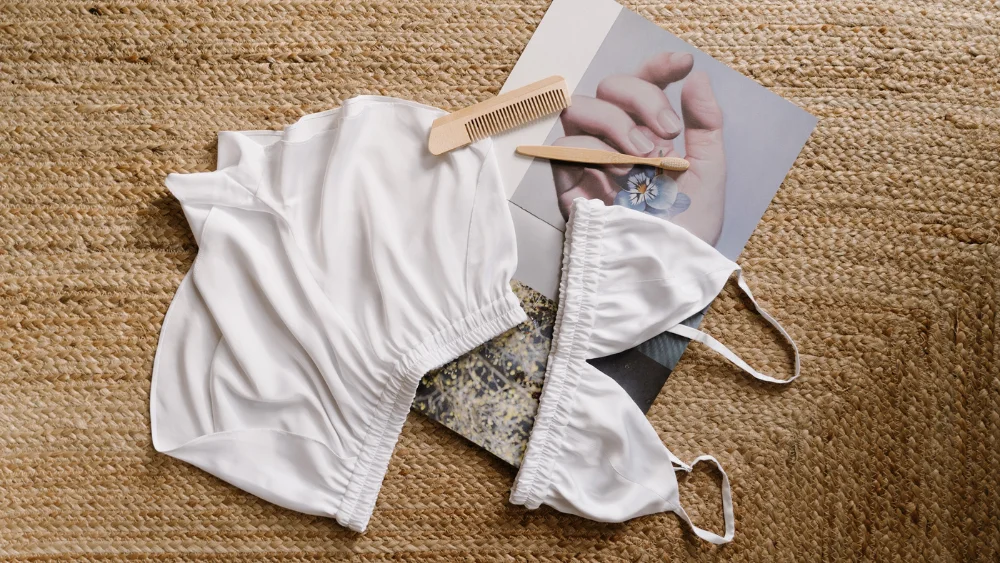
Material Costs: High-Quality Fabrics Are Far More Expensive Than Low-Quality Fabrics
Materials are the core factor that determines the quality of lingerie, as fabric selection directly impacts the comfort, health, and durability of bras. Low-quality fabrics typically cost less and are easier to produce, which results in lower bra costs. However, these fabrics tend to have poor breathability, and synthetic fibers used may contain irritating chemicals, negatively affecting skin health and providing low durability. In contrast, high-quality fabrics, especially natural fibers like organic cotton, silk, and bamboo, are usually more expensive. Bras made from these materials offer superior comfort and breathability, ensuring a healthier wearing experience.
For example, cotton’s moisture-wicking and breathable properties make it the material of choice for many premium lingerie brands. In contrast, low-quality synthetic fiber bras compromise on comfort and may lead to skin irritation or discomfort with long-term use. On the other hand, high-quality silk not only feels smooth and luxurious but also helps regulate temperature, offering comfort throughout the year. Although these high-quality fabrics come with a higher bra cost, their health benefits, comfort, and durability make them a worthwhile investment.
Labor Costs: Differences Between Skilled Workers in High-Wage and Low-Wage Countries and How They Impact Cost and Quality
Labor costs are another significant factor affecting bra cost in lingerie manufacturing. Labor costs directly influence the overall production cost and vary greatly between regions. In high-wage countries like the United States, France, and Germany, skilled workers typically earn higher wages. For example, skilled seamstresses in these countries may earn $20 to $30 per hour, whereas in low-wage countries like Southeast Asia, labor costs range from $5 to $10 per hour. While lower labor costs in these regions make production cheaper, the quality of the products may not meet the same standards as those produced in high-wage countries.
Production in high-wage countries can usually guarantee better quality standards since skilled workers can sew and control quality more precisely. However, as production shifts to lower-wage countries, brands may face challenges with quality control. This is why some luxury and high-end brands are willing to maintain higher production costs, even if it means paying higher labor costs, to ensure the precision and quality of the products. These higher labor costs ultimately reflect in the bra cost but also guarantee a finer product.
Design and Development Costs: How Brands Use Design and Development to Continuously Improve Bra Quality
Design is another major factor that affects the bra cost. Great design isn’t just about aesthetics; it also determines comfort, support, and durability. Many high-end brands invest heavily in design during the product development stage. They often collaborate with professional designers to innovate on styles and structure multiple times, ensuring that each new product provides exceptional comfort and ergonomic support.
Every detail of bra design needs to be meticulously crafted, especially improvements in the straps, cup shape, and the use of elastic bands. A successful design often requires multiple prototypes, adjustments, and customer feedback to perfect. Brands also need to conduct market research and invest in technological innovations to improve lingerie designs to better meet consumer needs. These design and development investments directly affect production costs and are reflected in the bra cost.
Development Costs: The Huge Expenses Involved in Design, Prototyping, and Repeated Refinements
The research and development of lingerie is a tedious and costly process. Every new bra design and production undergoes multiple stages from conceptualization to prototyping, refinement, and final production. Brands must engage in market research and testing to understand consumer needs, followed by several rounds of improvements and optimizations.
For example, during the early design phase, brands usually create multiple prototypes and conduct market testing while collecting consumer feedback. This process not only involves the expertise of designers but also requires the production of several sample versions, followed by adjustments. Each modification increases development costs, and these costs are ultimately passed on to the bra cost. The extent to which brands prioritize development also determines the quality and innovation of the product. High-end brands often invest more time and money to ensure that each bra meets the highest standards of comfort and quality.
Sampling and Repeated Improvements: How the Experimentation Process Drives Up Costs
Sampling and repeated refinement are unavoidable parts of bra development. Sampling is not only done to validate design concepts but also to test fabric compatibility, cut accuracy, and comfort across different dimensions. After each sample is made, brands meticulously evaluate the product and make adjustments based on feedback. This process involves considerable human, material, and time costs.
High-quality bras usually undergo more sampling and refinement, especially when testing fabrics and improving functional designs. For instance, brands may need to conduct several experiments on the comfort, elasticity, and support of different materials before finding the best combination. Each round of improvement requires additional investment, and therefore, the bra cost increases as these experimental costs accumulate.
Production Scale: How Large Brands Leverage Economies of Scale to Lower Per-Unit Costs, While Small Brands May Face Higher Unit Costs
Production scale plays a crucial role in bra cost. Large brands typically benefit from economies of scale, allowing them to lower the per-unit cost. Even when using high-quality materials and craftsmanship, large-scale production can spread these costs across a greater number of units, resulting in more reasonable product prices. This enables large brands to maintain high-quality standards while keeping their production costs lower.
In contrast, small brands that produce in smaller quantities cannot enjoy the same economies of scale. Small-batch production leads to higher per-unit costs and may increase inventory risks and logistics costs. As a result, small brands need to optimize production management and marketing strategies to reduce unit costs while ensuring brand competitiveness.
Brand and Operational Costs
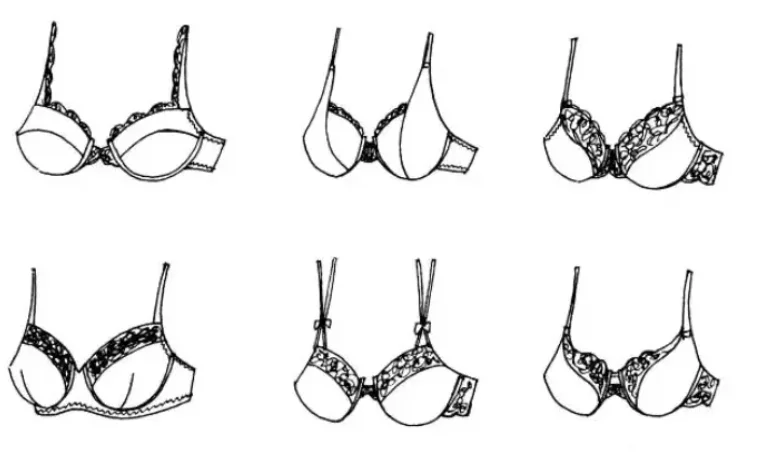
How Brand Premiums Affect Prices
Brand premium refers to the additional cost consumers are willing to pay for a well-known brand or specific brand image. Premium brands often have the ability to add a premium to their product prices by establishing a strong brand identity and market recognition, even though their production costs may not be significantly higher than mid-range or low-end brands. Brand premium is not just the value of the brand name; it also includes the added value conveyed to consumers, such as quality assurance, unique design, and comfortable experience.
For example, well-known lingerie brands like Victoria’s Secret and La Perla charge significantly higher prices than average brands. This price difference not only reflects the quality of the product but also the brand’s influence, consumer loyalty, and the substantial costs spent on advertising, celebrity endorsements, and marketing activities. Consumers purchasing from these brands are not only seeking quality and comfort but are also acknowledging the value behind the brand. Therefore, the brand premium is not simply about increasing the price but reflects the brand culture, consumer recognition, and marketing strategies, all of which influence the bra cost.
Brand Cost Structure: How Advertising, Promotion, and Operational Costs Affect the Final Price
Advertising and marketing promotion are unavoidable operational costs for major brands. To maintain their market share, large brands typically invest significant funds in advertising, social media promotions, TV, and magazine ads across various channels. In addition, brands need to pay celebrity endorsement fees, participate in high-profile fashion shows, and engage in public relations activities, all of which contribute substantially to their operational costs. For instance, Victoria’s Secret spends enormous amounts annually on advertising, endorsements, and fashion shows, and these expenses are reflected in the higher bra cost passed on to consumers.
Furthermore, the operational costs of a brand also include retail store rents, employee salaries, and after-sales service expenses. Well-known brands often have global chain stores and large retail networks, and the rents and management fees for these physical stores also contribute to the pricing of their products. As the brand expands globally, the costs associated with opening new stores rise, and these costs are transferred to consumers by raising product prices.
This vast cost structure makes it evident that the bra cost for major brands is much higher than that of smaller or unbranded products, especially when sold through traditional retail channels, where the price differences and operational costs are even more apparent.
Premium Brands and Their Markup: How Increased Operational and Advertising Costs Reflect in Consumer Purchases
Premium brands are able to add a markup to their products because they have the ability to establish a strong market presence. Consumers purchasing higher-priced bras often pay extra not only for the brand’s recognition but also for the high-quality shopping experience, unique design concepts, and lifestyle associated with the brand.
The premium of large brands is not just reflected in production costs but also in the marketing and operational strategies behind the brand. For example, Victoria’s Secret’s annual “Angel Fashion Show” is not only part of brand image-building and advertising but also involves substantial financial investment. The brand has to pay high endorsement fees, stage setup costs, and event organization fees. These expenses are ultimately recouped through higher bra cost passed on to consumers.
Additionally, the retail channel costs of premium brands are very high. To maintain their store image, brands must pay significant rents and salaries for staff. Even with the growing trend of online retail, major brands still have to spend on retail channels and logistics. These increased costs directly drive up the bra cost of the brand’s products, resulting in higher profit margins.
How Small Brands Lower Costs: How Smaller Lingerie Brands Offer More Competitive Prices by Reducing Middlemen and Adopting Direct-to-Consumer Models
Compared to large brands, smaller lingerie brands have a unique advantage in controlling costs. Small brands generally do not have massive advertising budgets, expensive celebrity endorsements, or high operational expenditures. Instead, they reduce costs by cutting out intermediaries and adopting more streamlined sales models, such as M2C (Manufacturer-to-Consumer), allowing them to offer more competitive prices while maintaining quality.
By selling directly to consumers online, smaller brands avoid the middlemen costs of traditional retailers and distributors. Consumers can purchase products through the brand’s official website or e-commerce platform, so the brand does not bear the high costs of retail store rents and extensive physical store operations. This allows small brands to attract consumers with products that are both high-quality and competitively priced.
In addition, small brands can reduce inventory risks by employing lean production methods, flexible manufacturing processes, and small-batch customization. Without the pressure of mass production, small brands can quickly adjust their products and designs based on market demand, avoiding the inventory backlog and promotional discounts caused by large-scale production in big brands.
In this way, small brands can offer high-value lingerie products, catering to consumers who seek quality while still being mindful of bra costs. These brands also focus on direct communication with consumers and are more attuned to individual needs and feedback, which further strengthens consumer loyalty to the brand.
Quality vs. Price: High Price Doesn't Always Mean High Quality
The Advantages of High-Quality Bras: Durability, Comfort, Design, and Fit
One of the biggest advantages of high-quality bras is their durability. While the initial investment may be higher, bras made from high-quality materials and crafted with meticulous attention to detail tend to last much longer. Compared to low-quality bras, high-quality bras made from premium fabrics such as high-density foam pads, silk, and fine lace retain their shape, color, and structure over time. Their support, elasticity, and comfort are maintained for a longer period, reducing the need for frequent replacements.
In addition, comfort and design are significant advantages of high-quality bras. Premium bras usually feature ergonomic designs that focus on the natural curves of the body, enhancing comfort. For example, carefully designed straps, soft back clasps, and well-fitting cups provide long-lasting support, while preventing pressure or discomfort. On the other hand, low-cost bras often use inferior materials and simplified designs, which may result in discomfort, marks, or an unnatural shape.
Fit is another key feature of high-quality bras. High-end brands provide bras with precise sizing and multiple options to accommodate various body types. In contrast, many low-quality bras may offer complete size ranges but fail to meet the fit and comfort needs of different individuals.
Why the Initial Investment in High-Quality Bras is More Cost-Effective, Reducing the Frequency of Replacement
Although the initial bra cost of a high-quality bra may seem higher, the long-term savings from reducing the frequency of replacement make it a more cost-effective investment. Low-cost bras often use cheap materials, simple craftsmanship, and lack refined designs, making them prone to sagging, deformation, tearing, or fading after a few washes. Consumers are forced to replace these products frequently, leading to continuous additional expenses. High-quality bras, however, offer better comfort and design, and they last longer, reducing the need for frequent replacements and long-term purchasing costs.
For instance, a high-quality bra, despite a higher upfront price, can last for years while maintaining both comfort and appearance. In contrast, a lower-priced bra may lose its original comfort within a few months, or the fabric may tear, forcing the consumer to discard it. This constant need for new bras often leads to spending more than what one would pay for a high-quality bra in the first place.
Therefore, while high-quality bras may have a higher initial bra cost, their overall value, durability, and comfort over their lifespan make them a much better investment in the long run.
Real-Life Case Study: The Production Cost Differences Between Luxury and Mid-Range Brands, and How More Investment in Production Improves Quality
The difference in the investment and craftsmanship between luxury and mid-range brands directly impacts the final bra cost and quality. Luxury brands, such as La Perla, Chantelle, and others, typically use more expensive materials like high-end lace, silk, and custom high-density foam pads. These materials not only provide superior comfort and support but also make the bra more refined and luxurious in appearance. For instance, La Perla often uses imported, high-quality lace, hand-embroidered and treated with fine craftsmanship, ensuring that each bra is not only comfortable but also exudes a luxurious feel. In comparison, mid-range brands might use standardized lace or polyester fibers, which, while suitable for daily wear, lack the same level of detail and luxury.
In the production process, luxury brands usually conduct more sampling and testing to ensure the quality of each product. This means they spend more on fabric, design, and refinement during the design phase. Each bra goes through several rounds of testing and consumer feedback to ensure optimal comfort and fit. Additionally, these brands hire skilled designers, technicians, and quality control staff to ensure each product meets the highest standards. All of these investments are reflected in the final bra cost.
For example, Victoria’s Secret, despite targeting the mid-high-end market, invests significant resources in production craftsmanship. The brand uses high-density foam pads to enhance support and focuses on refining design details to improve both appearance and comfort. These investments ensure that Victoria’s Secret bras not only provide comfort but also meet consumer expectations for fashion and design.
Market Case Studies: Cost Structure Analysis of Different Brands
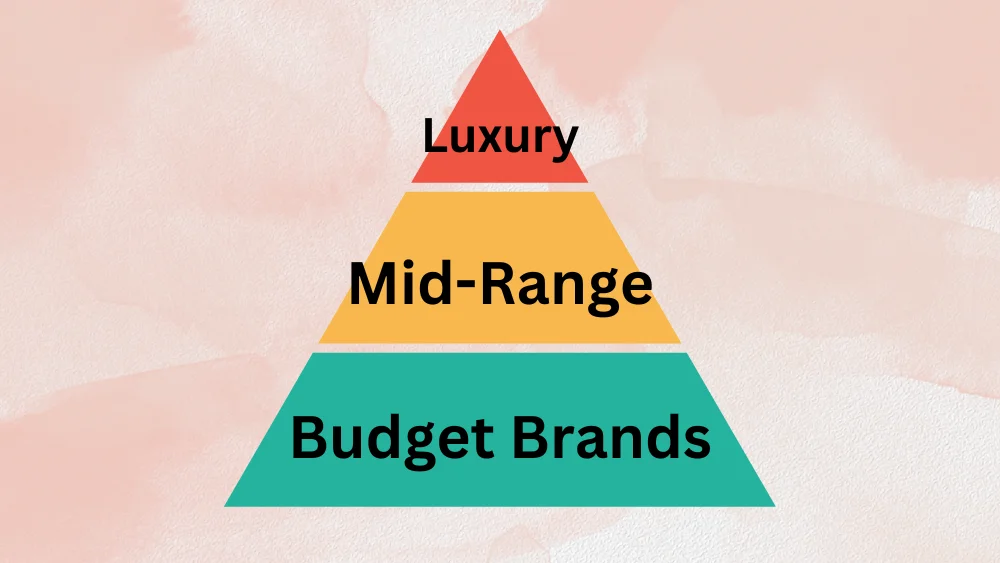
Comparing the Cost Structures of Luxury, Mid-Range, and Budget Brands
In the lingerie industry, different brands allocate varying amounts of resources to production, design, and labor based on their market positioning, product goals, and target consumer groups. These differences ultimately determine their retail prices and market competitiveness.
Brand A ( Luxury brands) typically use higher-quality materials, focus on superior design and craftsmanship, and emphasize brand uniqueness and high-end market positioning. Their production costs are relatively high. For example, a typical luxury brand bra might use materials like natural lace, imported silk, or high-density foam pads, and it may include hand-embroidery or special sewing techniques. Skilled labor costs are also higher, and significant investment is required during the design and development stages. The production cost for these brands might exceed $27, with the price often reflecting a premium passed on to consumers.
Brand B (Mid-range brands) tend to choose more practical materials and manufacturing processes that balance quality and cost. They typically use more common fabrics, such as cotton, polyester, or blends, and rely more on machine production. Although mid-range brands still focus on comfort and fit, their design and production investments are generally lower. Production costs for mid-range brands are around $15, and the price is usually lower than that of luxury brands, while still offering decent comfort and functionality.
Brand C (Budget brands) have the lowest production costs, often opting for cheap materials like low-quality synthetic fibers or basic cotton fabrics. They rely heavily on automated assembly line production to reduce labor costs and manufacturing investment. The designs are also simpler, focusing on basic styles aimed at providing affordable products to consumers. Production costs for budget brands might be as low as $6, making their retail prices highly attractive to price-sensitive consumers.
| Brand Type | Material Cost | Labor Cost | Design Cost | Production Process | Total Cost |
|---|---|---|---|---|---|
| Brand A (Luxury Brand) | $10 (Natural Lace, Silk) | $7 (Skilled Labor) | $5 (High-End Design, Development) | High-Density Foam Pads, Hand Embroidery | $27 |
| Brand B (Mid-Range Brand) | $5 (Standard Cotton, Blends) | $4 (Machine-Produced Labor) | $6 (Simple Design) | Machine Production, Standard Craftsmanship | $15 |
| Brand C (Budget Brand) | $2 (Synthetic Fibers, Basic Cotton) | $2 (Low-Cost Labor) | $2 (Simplified Design) | Automated Production, Mass Production | $6 |
How to Choose the Right Bra for You: Balancing Quality, Price, and Comfort
How to Choose the Right Bra Based on Personal Needs (Comfort, Sports Requirements, Environmental Concerns, etc.)
When choosing a bra, the first thing to consider is your personal needs, such as daily comfort, support during sports, and environmental considerations.
Daily Comfort: If comfort for daily wear is your primary concern, prioritize high-quality, soft fabrics like cotton, modal, or bamboo fibers. These natural materials have excellent breathability and moisture-wicking properties, making them ideal for long periods of wear while also preventing skin irritation.
Sports Requirements: For activewear, choosing a sports bra is crucial. Sports bras are designed with stronger support and more comfortable features, reducing discomfort and impact during physical activity. High-elastic fabrics (like Lycra) and seamless designs are common in sports bras, offering greater freedom of movement and enhanced comfort.
Environmental Concerns: If sustainability is important to you, it is recommended to choose bras made from organic cotton, bamboo fibers, or other natural, eco-friendly materials. These fabrics are not only gentle on the environment but also kinder to the skin, reducing the use of chemicals and being ideal for those with sensitive skin.
Balancing Price and Quality: Is It Worth Paying for the Brand? How to Ensure You’re Getting Good Value for Your Bra Cost
When buying bras, balancing price and quality is a dilemma every consumer faces. While well-known brands often provide high-quality products, high prices don’t always equate to higher quality. Here are several factors to consider when determining whether the bra cost is justified:
Quality and Functionality: Examine the design and materials of the bra to see if it meets your comfort, support, and fit requirements. For everyday wear, comfort and health are more important than the brand’s premium. Even mid-range or smaller brands, if they perform well in design and materials, can offer excellent value for money.
Long-Term Value: Consider the durability of the bra. A high-quality bra might have a higher bra cost initially, but if it continues to provide comfort and lasts for many years, it offers better value in the long run. In contrast, low-priced bras that need to be replaced frequently will ultimately cost more over time.
Justifying the Brand Premium: Understand the premium component behind a brand’s pricing. Some luxury brands derive their prices primarily from advertising costs, brand premiums, and retail expenses. Consumers should assess whether they are willing to pay for these extra costs based on their needs. Opting for smaller brands that focus on quality and consumer feedback often results in high-quality bras at a more reasonable bra cost.
Investing in High-Quality Lingerie to Enhance Comfort and Confidence
When choosing lingerie, many people tend to opt for cheaper styles, believing they can meet basic needs. However, investing in a high-quality bra is not only a guarantee of comfort and health but also an investment in self-confidence. The comfort, support, and design provided by high-quality lingerie allow every woman to feel more graceful and confident in her posture.
First and foremost, the bra cost of high-quality bras is often reflected in the material choice. The fabrics used are skin-friendly and provide all-day comfort. Natural fabrics such as organic cotton, silk, and eco-friendly materials are not only breathable and moisture-wicking but also help reduce the risk of skin allergies. In contrast, low-quality bras often use cheap synthetic materials that may cause skin discomfort or even trigger allergic reactions. High-quality bras ensure that you remain comfortable even after long hours of wear, whether for daily work, sports, or leisure time.
Secondly, the superb craftsmanship is another key feature of high-quality bras. Whether it’s the detailed stitching, precise cutting, or perfect fitting design, high-end lingerie brands pay attention to every detail. This meticulous craftsmanship provides better support, enhances the breast shape, and prevents discomfort such as marks or pressure. In comparison, low-quality bras, due to inferior craftsmanship, are more prone to deformation during use and may even lose their intended support over time.
Moreover, the superior design of high-quality bras can significantly boost a woman’s self-confidence. It’s not only about comfort; the design also elevates the overall appearance, allowing women to present themselves more gracefully. Features like breathable back designs, adjustable straps, and seamless construction ensure that wearers maintain elegance in any situation. By improving both inner comfort and outer appearance, women’s confidence is naturally enhanced.
For consumers, choosing high-quality lingerie isn’t just about the brand or price—it’s more important to identify brands that truly focus on quality. High-quality brands usually strive for excellence in their fabrics, designs, and craftsmanship. Consumers can assess quality by looking into the brand’s manufacturing processes, the materials used, and their design philosophy. At the same time, avoid making decisions solely based on price, as low prices often mean compromises on fabric and craftsmanship, ultimately affecting comfort and health.
Practical Buying Tips: First, research the brand’s quality promises and consumer reviews, choosing brands with a good reputation. Second, opt for bras made from natural or eco-friendly fabrics to ensure comfort and health. Lastly, pay attention to design and fit; choose bras that suit your body type and avoid sizes that are too large or too small.
In conclusion, investing in a high-quality bra is a form of respect for your body and a path to greater comfort and confidence in your daily life. It not only provides comprehensive support for your body but also helps women feel more composed and confident in their everyday routines.

